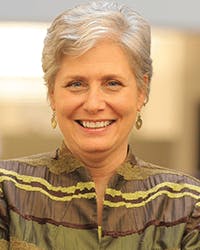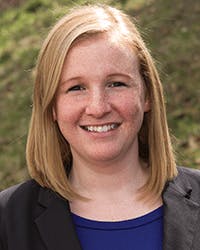ISE Magazine’s Q&A With Fiber Providers Who Make It Work —
The fiber optics market is expected to grow to reach $5 billion by 2021 at a CAGR of 9.8%. Demand for increased bandwidth to homes is at an all-time high, with multiple connected, streaming, over-the-top (OTT) and gaming devices per household that rely on quality Internet connectivity.
And though fiber is the ideal, it’s not easy or inexpensive to deploy to homes across the United States. That’s why ISE is highlighting 2 entrepreneurial service providers that have found a way to make the FTTH model work. Read on to learn some insights about what works, and the approach it takes to stay motivated when things get tough.
Source: Fiber Optics Market by Cable – Global Forecast to 2021. Research Markets. https://www.researchandmarkets.com/research/7ghm5v/fiber_optics
5G AND FIBER
ISE: Since 5G is dependent on increases in bandwidth, fiber fronthaul and backhaul builds will rise as mobile operators migrate from traditional distributed radio access networks (D-RANs) to centralized radio access networks (C-RANs). This is a big task. Share some of your recommendations about how to get this done quickly and efficiently.
Espeseth: We recognize the benefits that 5G technology can bring to our community, and we want to facilitate the orderly deployment of this new infrastructure. Our current focus is on developing an intentional and well-designed solution that would allow cell providers to install their equipment on our poles in a way that would ensure parity with existing users and future technologies yet to be conceived and developed, while aiming for an approach that will maintain the highest possible standards related to safety and aesthetics. We’re often asked if 5G deployments will make Chattanooga’s community-wide fiber optic network obsolete. To the contrary, the effective implementation of 5G requires tremendous backhaul which can best be provided by a fiber optic network. The increased data demands of 5G technology will make FTTH networks even more valuable.
ENTREPRENEURIALISM
ISE: What is the most entrepreneurial fiber project you’ve undertaken? What did you learn and what do you wish you had known before you embarked upon it?
Espeseth: Clearly EPB Fiber Optics’ launch into providing retail communications was the most entrepreneurial project we’ve undertaken as a company. With decades of experience as an electric power distributor, we disrupted a market already served by two large Tier I providers. We relied on our employees to learn a completely new technology, operate in a new industry, but still maintain our tradition of providing outstanding customer service. Eight years later, we serve 92,000+ customers, and have built an infrastructure that drives economic development and improves the quality of life for our community.
RURAL BROADBAND
ISE: Deloitte’s recent study, Communications Infrastructure Upgrade — The Need for Deep Fiber, shared that only 61% percent of Americans in rural areas have access to downloads of 25 megabits per second. What are some of the tactical solutions to change that? Is there any "secret sauce" or a favorite tool/tactic/strategy you believe would help?
Espeseth: We think that ensuring communities have the right to choose who brings them service, and removing legal barriers that artificially prohibit competition is a crucial step in ensuring everyone has access to this critical infrastructure. By creating a level playing field for all providers to deliver high-speed broadband, rural communities gain the necessary tools to improve education, and to position their communities for business opportunities and more jobs.
LEADERSHIP
ISE: What is the most valuable leadership lesson you’ve learned in your career that you’d like to share with ISE magazine’s 18K readers?
Espeseth: Not to dwell unnecessarily on the inconsequential decisions, but always keep the long-term vision front and center in your thought process. That’s often difficult when we’re working in such a changing industry, but it minimizes the distractions that prevent you from realizing the real goal.
______________________________________________________________________________________________
Melissa Wright, Smithville Communications
Melissa Wright, with Smithville Communications for more than 6 years, is the Manager of the Smithville Fiber Project Management Department, and is also the lead Project Manager for several of Smithville’s fiber optic initiatives. Melissa’s project portfolio includes fiber extensions and fiber overbuilds projects in both ILEC and CLEC areas, residential gigabit product line development, commercial product development, and the implementation of new and replacement core telecommunications equipment. Melissa has a Business Management degree from Indiana University, and holds both Project+ and Six Sigma Yellow Belt certifications. For more information, please email [email protected] or visit www.smithville.com.
ENTREPRENEURIALISM
ISE: What is the most entrepreneurial fiber project you’ve undertaken? What did you learn, and what do you wish you had known before you embarked upon it?
Wright: In January of 2015, Smithville began its largest privately-funded, community-wide CLEC fiber installation projects it had embarked on to date. In partnership with the City of Jasper, officials of Jasper, Indiana, Smithville committed to passing every home and business within the municipality’s boundaries with fiber optics offering gigabit speeds within a 5-year timeline. We learned very quickly that we needed to take a closer look at how we did things traditionally, within our federally-regulated territories, a space that we had solely operated within for so many years. We learned how those processes would need to be different in order to be profitable within the non-regulated landscape. We threw a lot of our traditional network and plant design principals out the window, and went back to the drawing board within the first year of the project. We reworked the entire project to allow us to build out our ideal network from day one.
RURAL BROADBAND
ISE: Deloitte’s recent study, Communications Infrastructure Upgrade — The Need for Deep Fiber, shared that only 61% percent of Americans in rural areas have access to downloads of 25 megabits per second. What are some of the tactical solutions to change that? Is there any "secret sauce" or a favorite tool/tactic/strategy you believe would help?
Wright: Many Last Mile ISP’s want to serve rural areas, however, the business case around doing so leaves them at a disadvantage. We are currently exploring relationships with local utilities that have the desire to network their lift stations and/or other miscellaneous facilities, many of which tend to be in rural areas, to at least give us a business need to extend fiber into those rural areas in the first place. Then, we’re evaluating how we can capitalize on that fiber once it’s there, preferably, in partnership with those local utilities.
CRYSTAL BALL
ISE: Look down the road to 2025. How should the fiber landscape and vendor/provider collaboration change compared to today?
Wright: I would expect requirements for open-access fiber optic networks and open-access wireless networks to increase. Open-access networks are common around the world, and are usually prevalent in countries that have the greatest broadband penetrations rates.
______________________________________________________________________________________________
More Q&A columns to come.
Be a part of it. Send us your questions to ask providers about their network challenges.
Or, suggest someone you think would be a GREAT person to interview. Email: [email protected].
Save
Save
Save
Save
Save
Save
Save








